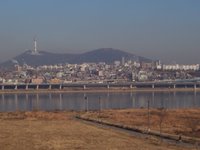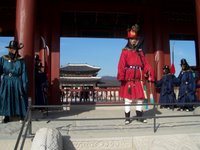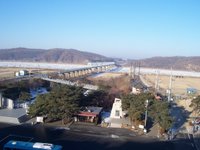This week South Korea became the latest country to announce
a carbon emission trading system. The Korean ETS will start in 2015 and country is
the first in Asia to announce such a scheme. As Australia’s fourth largest
trading partner with a two-way trade of $31.9 billion in 2010-11, the move puts
a further lie to the idea an Abbott Government will rollback the carbon tax if
it wins office in the next 12 months. The
Korean strategy plans for the republic to become one of the
top seven ranked green economies by 2020 and one of the top five by 2050.
Not surprisingly the Korean decision has been welcomed by the Australian Government. Climate change minister Greg Combet was quick off the mark with amedia release on Thursday. Combet congratulated the South Korean Government for “taking this important step to drive sustainable growth and reduce greenhouse gas emissions”. Combet said Australia was now one of 34 countries around the world to use emissions trading as the primary vehicle to drive carbon pollution reduction. “We are far from leading the world, as some have claimed,” Combet said referring to Coalition carping that Australia was taking too much of a risk with its tax.
The South Korean cap and trade ETS will cover around 500 of the country’s
largest emitters. The Government will set emissions caps and reduction targets
for each trading period. South Korea’s carbon price is yet to be determined but
the penalty for non-compliance will be capped at $83 a tonne. The environment
ministry launched a voluntary “cap without trade” Target Management System this
year. But from 2015, the ETS will be mandatory for installations emitting 25,000 tonnes
of carbon dioxide equivalent and firms emitting 125,000 tonnes, with smaller
entities continuing with the TMS. Three three-year phases are planned, with at
least 95% of allowances given for free in the first two.
The bill that passed the national assembly this week was authored by the Green Growth Committee. The GCC was launched by Korean President Lee Myung-bak in 2009. A year earlier, on the 60th anniversary of the founding of Korea, President Lee explained why the ETS was needed. “Green growth is not a matter of choice, but a requirement that we must fulfil by all means for our future survival,” he said. “What matters is whether we can take the lead based on our own original technology, or whether we have to lag behind other countries.”
South Korea was the world's eighth largest emitter of carbon in 2010. In November 2009, the government adopted a medium-term
emissions reduction target of 30%, relative to ‘business-as-usual’, by 2020.
Just as they have done in Australia, the Korean business community strongly objected
saying the plan was over ambitious and would make Korean industry uncompetitiveness.
However, the Presidential Committee considered an ambitious target necessary in
order to stimulate a broad range of clean technology innovation for greater
energy efficiency across the economy, as well as for the deployment of
renewable energies.
Korea enacted legislation
in April 2010 to permit the government to intervene in the market “to address
market failures in promoting green growth”. The law made provisions for the
emissions rights trading system. Sustained industry opposition forced many revisions
was followed by inter-party parliamentary squabbles that almost killed the
bill. But on 2 May, the law passed during a surprise lame-duck session. The program was passed despite fears it would
hurt the economy, because of the long-term benefits to the country’s huge
conglomerates from being more energy-efficient and exporting greener goods.











